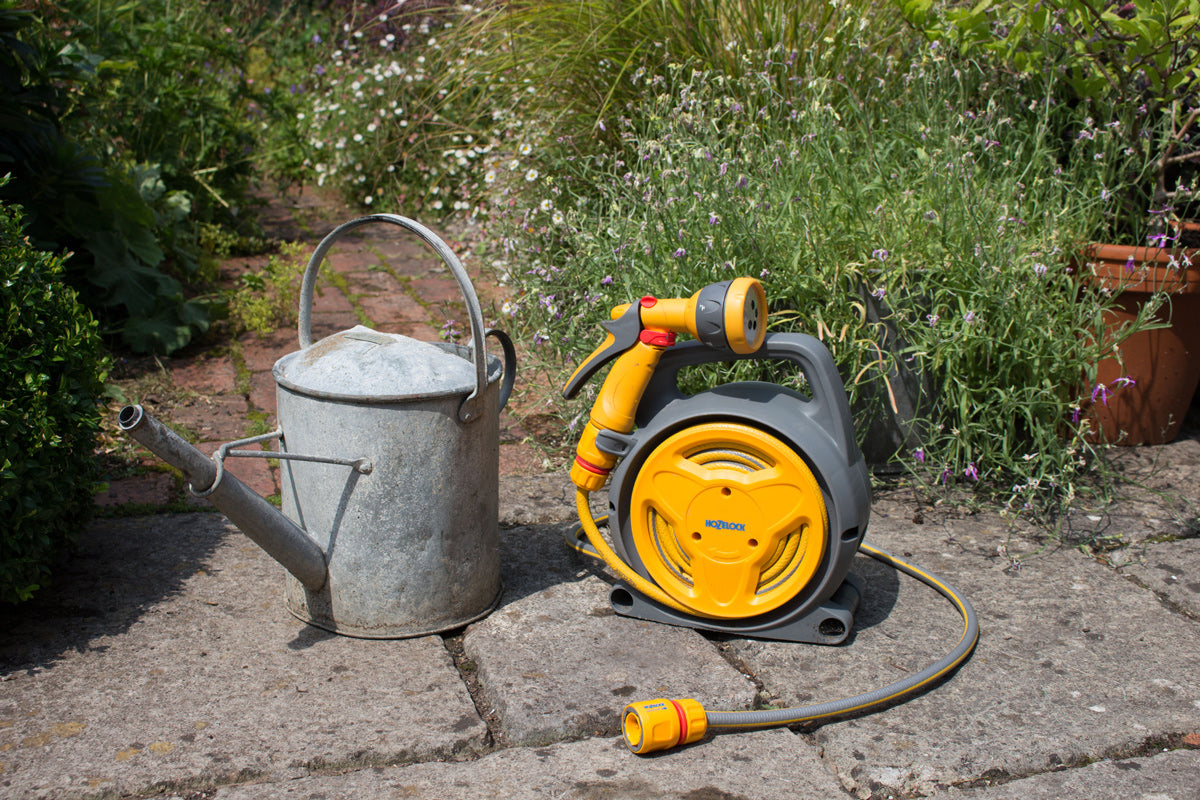Water-Wise Gardening
It started raining last October, where I live in West Yorkshire, and it didn’t stop for more than a couple of days right through to March. In February, a succession of storms meant torrents of water cascaded off the hillsides and the river burst its banks. It felt like it would never stop.
It’s easy to think after such a wet winter that water supplies won’t be a problem, but we then enjoyed the sunniest and one of the driest springs on record, showing that even in Britain water is still a precious resource.
Being water-wise is crucial, especially during a drought when there’s the possibility of a hose pipe ban. The act of watering can also be a time-consuming chore for gardeners. Who wouldn’t prefer to be sat in a deckchair with a chilled drink in their hand, rather than filling a watering can for the umpteenth time? So it makes sense to reduce the need to water and to target only the plants that need it the most.

What to water and what to leave?
- Plants in containers can’t reach their roots down into the soil in search of moisture, so they’re reliant on you to quench their thirst.
- Edibles need water so that lush leaves can grow and fruit can swell.
- Anything you planted this year won’t have had a chance to develop a deep root system and will struggle during prolonged dry spells.
- Don’t forget that ponds and bird baths will need topping up regularly to keep wildlife happy and healthy.
- Established plants shouldn’t need any extra water as they’ll have developed deep roots.
- Even if grass turns brown don’t water it as it will recover very quickly when it rains.

Reduce watering
Grow plants that are native to the Mediterranean and South Africa as these have adapted to grow in climates where water is scarce. Plants like lavender, rosemary and thyme, stachys, rock roses and succulents not only look good, they won’t wilt if you can’t water them. Make sure where you plant them has free-draining soil so that they can cope with winter wet.
Plants in small pots will dry out much more quickly than larger-sized containers, so the key is to have fewer but larger pots, which means you’ll only need to water every couple of days rather than every day.
Mulch beds and borders with compost or chipped bark after watering or a spell of rain. This will help to retain moisture in the soil rather than it evaporating.

How to water
How you water can make a big difference to how much you use and how frequently you need to do it.
- Direct water to the roots of plants rather than indiscriminately watering the soil and foliage.
- Sprinklers waste a lot of water, so it’s best to use a hose (if there isn’t a ban in place) or watering cans.
- Water when it’s cool, early on a morning or on an evening so that the water has time to absorb into the soil rather than evaporating.
- If a plant is wilting it should be watered as soon as possible, otherwise, give plants in the soil a thorough soak once every 7-10 days during dry spells rather than a light sprinkle every day or so. This will encourage plants to develop deeper root systems that are more able to cope with drought.
- Plants in containers may need watering every day, and hanging baskets twice a day in very hot weather.
- If you have space, collect rainwater in a water butt. These can be attached to the downpipes of your house, you can even have one that catches water falling off the roof of your greenhouse. Use this to fill watering cans rather than attaching a hose, as water stored in butts may contain legionnaire’s disease which can be inhaled in fine mist particles.
Written by Louise Curley


